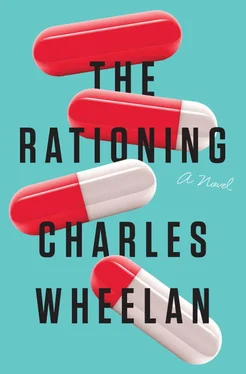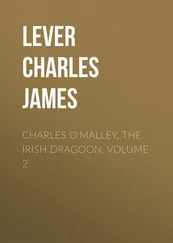Sloan and I said a pleasant goodbye outside Starbucks with another platonic hug. We vowed to stay in touch. Once the story broke, the White House dictated whom we spoke to in the media and what we told them. Later, when the various inquiries and commissions began their work, my lawyers would not let me speak with Sloan. When those verdicts arrived (paving the way for this book), I finally was in a situation where I could just pick up the phone and call her. By then, she had been promoted and was coordinating all of the New York Times investigative pieces. I left a message—a semi-rambling request to catch up “after all this.” She did not call back. I sent a text a week or so later and did not get a reply to that, either. Once I called her office at the Times , where an intern dutifully took a message. I never heard back. I have since learned that Sloan married the guy from The New Yorker . I was not invited to the wedding.
PART 4

IT HITS THE FAN
THE PRESIDENT HAD FLOWN TO LOS ANGELES THAT AFTERNOON, where he spent several hours before Air Force One took off for Australia, with a refueling stop scheduled in Hawaii. The national security team had made no decision with regard to the Chinese Dormigen offer, but they had decided that he should make the trip to Asia to preserve his “optionality.” If nothing else, flying to the South China Sea Conference would give the President a little leverage. We all recognized that if the Chinese understood the scale of the Capellaviridae crisis, the price for the “free” Dormigen would rise precipitously. The President was en route to Australia in part to keep up appearances, like an unhappy couple who put on a good face for Thanksgiving. Maybe the President would sign the South China Sea Agreement; maybe he would take the Chinese Dormigen instead. Flying to the region kept all the options open. Obviously we were in constant secure contact with him.
At about four a.m. on the day after I met with Sloan—one a.m. on the West Coast— The New Yorker posted a short “breaking story” on its website. In just a few paragraphs, the piece outlined the Dormigen shortage and the fatal outbreak of Capellaviridae. Because The New Yorker deemed the story “enormous and urgent,” the magazine had immediately enlisted a consortium of print and media news outlets to assist in the follow-up reporting. Just about every news outlet in the nation, and subsequently the world, was following up on The New Yorker story within an hour of the original post.
Some crucial details in those early stories were incorrect—fabulously so. First, most posts described Capellaviridae as “spreading,” giving the impression that it was a contagious disease. Second, some of the early reporting by Home Depot Media quoted unnamed “national security” officials who described the situation as “most likely a highly sophisticated terrorist attack.” The unnamed officials speculated that a hostile government or a terrorist organization (“or several such entities working in collaboration”) had introduced the Capellaviridae virus into the U.S. and was also responsible for the Long Beach warehouse fire that had caused the Dormigen shortage. Because the September 11 attacks had been unexpected and unusual, the public was primed to believe the next big attack could be equally imaginative and unprecedented. One anonymous official at the Department of Homeland Security laid out a grim scenario: “The worst case is that a hostile government or terrorist organization has introduced a pathogen that will kill us on a scale previously unimaginable. The best case is that the group responsible has an antidote and will hold us hostage until they get what they want.” This was what America woke up to.
In Asia, where it was late evening, government leaders were suddenly made aware of the magnitude of what was happening in the United States. China’s President Xing was addressing a convention of farm equipment manufacturers in Shanghai when an aide walked onto the stage and delivered him a note. President Xing excused himself, walked off the stage, and never returned.
I WAS SLEEPING ON MY COUCH WHEN EVERY DEVICE I OWNED began to ping or beep. I had fallen asleep the night before after two beers, having watched mindless television as I mulled over my conversation with Huke, searching for clues. My thoughts kept skipping to the encounter with Sloan instead. The first text I saw was from the Chief of Staff: “Call me immediately. Urgent.” My mind raced, in part because I was trying to figure out where she was texting from. The President would have taken off from California some hours earlier, so the only possibility was that she was on Air Force One somewhere over the Pacific. That assumption turned out to be correct. Air Force One had taken off from Los Angeles around nine p.m. California time, midnight on the East Coast, so the President and senior staff, including the National Security Adviser and the Secretary of Defense, were nearly to Hawaii when the first Capellaviridae stories began to break. The Communications Director was on board, but it was one of his aides—with no knowledge whatsoever of the crisis—who first spotted the stories as she perused the first headlines of the day. The early stories seemed so bizarre that she ignored them, but within minutes credible news organizations were reporting more details. She woke the Communications Director, who immediately woke the Chief of Staff, who woke the President. This cascade of “who woke whom” would have been amusing under different circumstances.
Immediately after waking the President, the Chief of Staff sent orders to turn the plane around, hoping to get back to the mainland before the story spiraled into national chaos. She, like all of us, had known in the back of her mind that this moment would come, though it was difficult to imagine a worse place for the President to be when the story broke than over the Pacific Ocean. The Captain notified the Chief of Staff that there was plenty of fuel to return to Los Angeles; with favorable winds and a higher airspeed, the plane could be on the ground in less than three hours. The Captain never asked why the President had to return urgently to the mainland. One has to appreciate the integrity of that chain of command. An order was given on behalf of the President and the Captain turned the plane around.
The President and his senior advisers—those on board with a knowledge of the crisis—gathered hastily in the Air Force One conference room. Others on the plane, all the junior staffers and the traveling press, were awakened as the hulking 797 banked sharply and began its 180-degree turn. Even the most junior reporter recognized that a U-turn on Air Force One was likely to be newsworthy. As the media folks picked up their devices to report what might be a mechanical failure, or perhaps a medical issue on board, they received frantic incoming messages from stateside editors and producers. The fact that Air Force One was now turning sharply back toward California was evidence, if somewhat circumstantial, that something potentially massive was afoot.
I called the Chief of Staff, still not aware of the breaking news. The call went straight to voice mail. I left a short message and then sent her a text acknowledging her text to me. As I waited for a reply, I scrolled through the headlines on my phone, immediately recognizing what had happened. A few seconds later, I received a return text from the Chief of Staff: “Give me a few minutes.” Those few minutes grew to ten, then twenty. I fidgeted on the couch, recognizing that the longer the story bounced around without some adult supervision from the White House, the less recognizable it would become. Eventually the Chief of Staff called on my secure phone. I answered immediately. “I’ve seen the news,” I said, trying to appear calm.
Читать дальше













